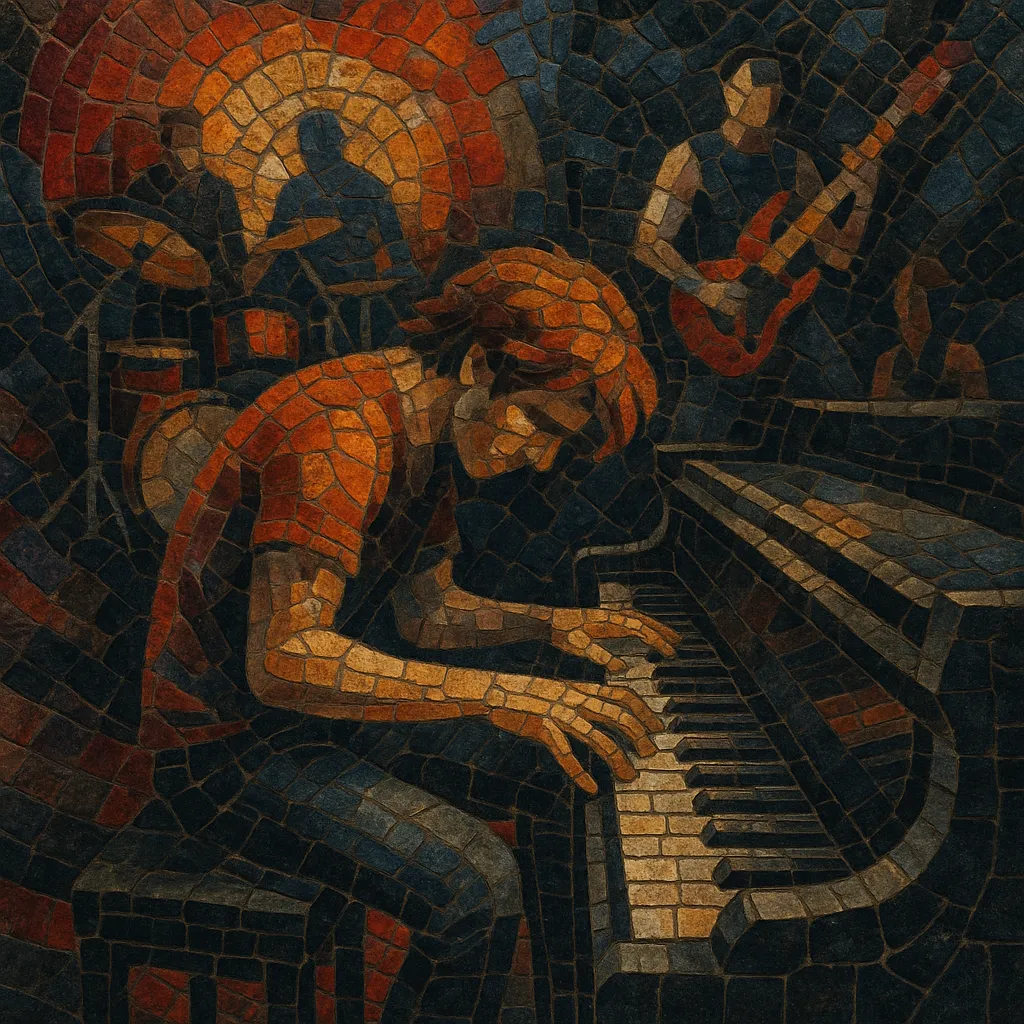
Piano rock is a subgenre of rock in which the acoustic or electric piano is the primary lead instrument, often taking the role that electric guitar plays in most rock bands. It combines rock’s backbeat and energy with piano-centered songwriting, chordal grooves, and melodic hooks.
The style ranges from high-energy, boogie-woogie–influenced rock and roll to lush, pop-leaning ballads and introspective singer‑songwriter material. Arrangements typically feature a rock rhythm section (drums and bass) supporting rhythmic left-hand figures and hook-driven right-hand motifs, with guitars and keyboards used as color rather than the central focus.
Lyrically, piano rock often emphasizes storytelling, romance, nostalgia, and personal reflection, though anthemic and stadium-sized choruses are also common. Its sound world bridges the soulful harmonies of blues and gospel with the accessible craft of pop rock.
Although the label “piano rock” became common later, its roots lie in the 1950s rock and roll era, when piano firebrands like Jerry Lee Lewis and Little Richard brought boogie-woogie drive and gospel-tinged harmonies to the mainstream. Their approach translated the athleticism of blues and boogie piano into a rock context. In the 1960s, baroque pop and singer‑songwriter movements normalized keyboard-led arrangements, while British and American bands increasingly used piano for both ballads and uptempo rockers.
The 1970s defined piano rock as a distinct identity. Elton John and Billy Joel fused rock backbeats with dazzling piano chops and pop-savvy songwriting, turning piano into an arena-filling lead instrument. Acts like Queen and Supertramp further demonstrated how piano could anchor ambitious, multi-part rock epics alongside radio-friendly hooks. Glam rock’s theatricality and soft rock’s melodic warmth both fed into the genre’s expressive breadth.
Through the 1980s, piano-led rock shared space with guitar-heavy and synth-driven styles, but it remained a potent vehicle for singer-songwriters and art-pop artists. In the 1990s, Ben Folds Five revitalized piano rock with a punchy, alternative edge—eschewing guitars entirely—while Tori Amos and Fiona Apple brought darker, intimate, and harmonically rich piano-driven writing to alternative audiences.
The 2000s saw piano-forward bands like Keane, Coldplay, and The Fray bring the sound to modern alt/indie pop-rock, favoring grand, resonant piano textures, emotive melodies, and anthemic choruses. Today, piano rock remains a flexible toolkit—equally at home in stadium pop-rock, introspective indie, and singer‑songwriter balladry—its influence embedded across mainstream and alternative music.

